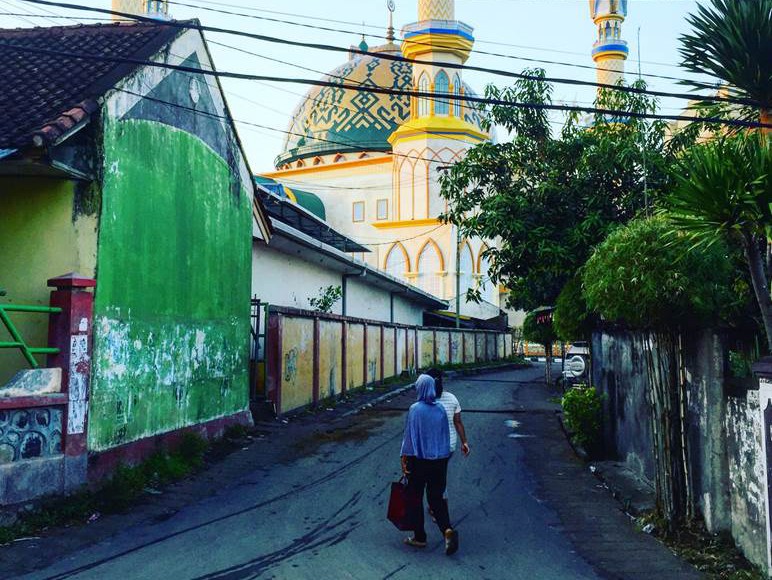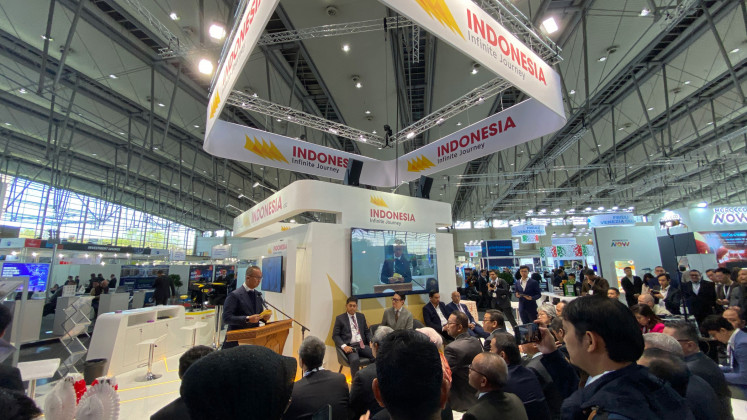Grounded jet engines power Indonesia’s pearl paradise
The turquoise, nutrient-rich waters off the coast of the Indonesian island of Lombok are perfect for growing pearls.
Change Size
 Top: Only 72 percent of Lombok’s 3.2 million residents have electricity. Above: The island has a string of high-end beach resorts that limn its pristine, coral-strewn beaches. But the interior is largely rural, quilted with rice paddies, peanut fields and coconut palm groves. (GE Reports/Tomas Kelner)
Top: Only 72 percent of Lombok’s 3.2 million residents have electricity. Above: The island has a string of high-end beach resorts that limn its pristine, coral-strewn beaches. But the interior is largely rural, quilted with rice paddies, peanut fields and coconut palm groves. (GE Reports/Tomas Kelner)
T
he turquoise, nutrient-rich waters off the coast of the Indonesian island of Lombok are perfect for growing pearls. But when pearl farmer Fauzi Se wanted to take advantage of nature’s bounty and expand production at his jewelry business, he encountered a man-made problem — his workshop didn’t have enough electricity to power his machines.
“We recently ordered casting equipment to help with our pearl production,” Se said. “But, after the goods had arrived, it turned out we were not ready on the electricity side.”
This is not an unusual problem in Indonesia. The world’s fourth most populous country desperately needs to send more power to its 255 million residents spread across 18,000 islands. “The country’s geography creates a special set of challenges,” said GE Power President and CEO Steve Bolze during his recent visit to Jakarta. “You can’t just build big power plants and string wires across the sea.”
Instead of building conventional power plants, which can take years, his business recently deployed on Lombok two “fast power” units. These truck-mounted mobile gas turbine generators can start producing more than 25 megawatts each in less than a month after delivery.
In Lombok, the units sit at the end of a dirt road surrounded by rice fields, a mountain teeming with monkeys and the sea. The site is so remote that GE had to build a temporary jetty on the island and transport the units on barges from Singapore.
President Joko Widodo has made upgrading the power in Lombok, and the rest of Indonesia, a central part of his plan to boost the economy. His ambitious goals include increasing power generation capacity by 70 percent over the next three years and bringing electricity to 98 percent of residents. Experts calculate that each 1 percent rise in economic output in Indonesia increases energy demand by 1.8 percent.
Fewer emissions
To make things even more challenging, Indonesia — which currently uses coal to generate half of its power — also wants to reduce its carbon emissions by 29 percent by 2030. “You really need to get smart,” Bolze says.
Only 72 percent of Lombok’s 3.2 million residents have electricity. Those lucky enough to be on the grid can never be sure when the power is about to go out. “In Indonesia, access to reliable electricity is a problem all over the country,” said Tony Anthony, a project manager at GE Power.
“Even in Jakarta, blackouts occur, and many major hotels have backup generators.”
The units arrived on July 2, and when GE Reports visited the site in September, they were already connected to the grid and producing electricity. A team of field engineers working for GE were completing final environmental tests of the units, which can burn both diesel and natural gas. “Because of the archipelago, you need to have lots of microgrids,” said Matt Patterson, an Australian engineer who spent the summer setting up the units in Lombok. “That’s where you see the benefits of fast power.”
The units’ mobility isn’t their only unusual feature. The machines, which GE calls TM2500 aeroderivative gas turbines, are essentially a ground-based version of GE’s popular CF6 jet engine — the same engine that powers many Boeing 747s, including Air Force One. The mobile plants have 50 percent fewer emissions than comparable diesel equipment and can be cranked up to full power in as little as 10 minutes.
In January, Anthony’s team also installed four TM2500 sets on the island of Sulawesi, in Gorontalo province, which are now generating 100 megawatts (MW) of power, enough to supply approximately 800,000 Indonesian homes with consistent electricity.
GE will install eight additional mobile power plants in Indonesia. Together they will generate 500 MW of power, enough to supply about four million homes. “Our work is part of the president’s goal to electrify all of Indonesia,” Anthony said.
As for Se, with enough electricity to power his business, the world will finally be his oyster.









